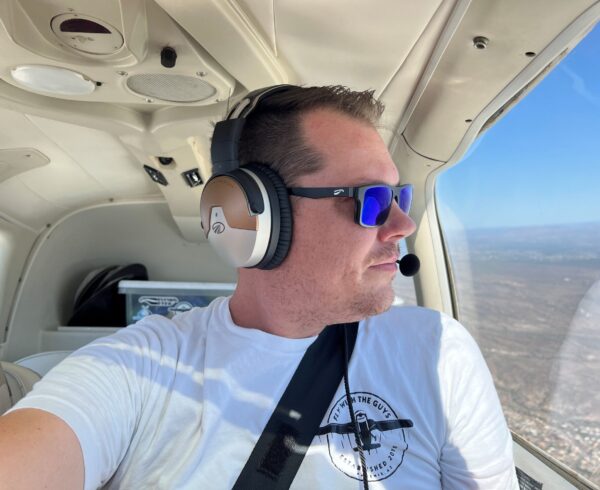Welcome to “Landing There,” the blog series where we talk to pilots who regularly land in remote place, and get their recommendations, perspective, and tips about unusual landing sites.

In our last installment of “Landing There,” we got tips on backcountry flying from adventurer, pilot, and TV host Nick Hoffman. For this blog, we caught up with Maxime Compagnon, pilot, ultralight enthusiast, safety advocate, and founder/podcast host of The STOL Collective. Maxime shared a trove of tips and insights about short take-offs and landings (STOL) plus a few recommendations for great places to fly in Europe.
Maxime grew near Paris, France, just a few miles from the painter Monet’s famous garden at Giverny, and also just a few miles from the headquarters of one of the largest French glider clubs. He’s been fascinated by aviation since his first ride in a glider, arranged by his dad when Maxime was just six years old. He had to wait until he was 15 before he could learn to fly by himself. Through high school and university, he flew gliders for fun and in competition, with help and support from the French Glider Association and French Sports Ministry. His university even paid for half of his flying hours, a form of financial aid that students everywhere might envy!

After he finished his degree, flying went on hold for a time while Maxime studied abroad, in Sweden, then settled in Germany to begin his career. In 2009, Maxime rekindled his passion for flying, moving from gliders to ultralight aircraft. (Maxime adds, “A note for our North American friends: European “Ultra-Lights” are similar to Light-Sport Aircrafts. However, we are allowed to use constant speed props (no single lever mandatory) and have retractable undercarriage.”)
In January 2015 he got a modified Zlin Aviation, Savage Cruiser, a very STOL- and off-airfield-capable craft. His first flight was to France, to see his parents in Fontaineblau and to show his 91-year-old grandfather his new bird!
In his day job, Maxime is an engineer specializing in automotive displays, and he currently works for BMW Motorrad, based in Munich. He flies from there mostly through the Alps, to Italy, Austria, and France. And because he is a glider pilot at heart, he truly flies through the mountains, not over them. He’s been fascinated with backcountry flying since he was a kid. “There was an old VHS tape of the Ellis family’s adventures in Alaska at the glider club where I learned to fly, and I was mesmerized at the places they went in their [Piper PA-18] Super Cub.” Today, he takes camping trips into the Alps and Dolomites, landing on grass fields at 5,000 to 7,000 feet, and in 2017, he went on a flying vacation all over the UK with a good friend.
Maxime is keenly aware of the safety aspects of backcountry flying. “I lost several friends to accidents. Afterwards, I read an FAA report and realized that they might have survived if they had worn more safety equipment. That’s why I started my podcast, to share great flying stories from my guests and to bring awareness to other friends and pilots about safety practices.” He also believes in the importance of keeping STOL skills sharp. “To get pilot’s license, people have to train for emergency, off-airport landings, but few pilots will ever practice again. As a glider pilot, I’ve had to land off-airport a lot, and it’s good training. You need to hone skills like stalling, so I practice flying slow, close to stall. If you don’t know the limits of your aircraft., you can’t be safe.”
Maxime says Europe has a small, but stalwart community dedicated to STOL flights. In France, there is a long history of mountain flying and landing uphill on alpine slopes. The Swiss search and rescue pilot Hermann Geiger pioneered the art of glacier landings in the early 20th century, and his protégé French pilot Henri Giraud continued the tradition with mountain rescues and the first landing on top of Mont Blanc, back in 1960. Today, you need a mountain rating in France to land an aircraft larger than an ultralight on a mountain airport or airstrip. No matter what aircraft you’re flying, Maxime recommends learning with an instructor qualified to teach for a mountain rating. “There are so many different conditions you have to be prepared for, such as sudden updrafts or downdrafts. Scenarios you don’t normally experience on flat land.”
There are also online resources for pilots flying to off-airport destinations. On Facebook, Maxime recommends the STOL Europe group and bush pilot Kevin Quinn’s Big Tire Pilots. There are also plane-centered groups, and if you’re interested in flying the Alps, you can contact the European Mountain Pilots Association.

Europe offers a variety of off-airport destinations, but Maxime says you need to check the rules before you fly. “In Germany and Switzerland, you’re only allowed to land in airfields with an ultralight. In other European countries, you can land an ultralight on private property with landowner permission. In Sweden, you can land them anywhere as long as you don’t damage property or leave trash.” With other planes, you can only land on-airport in Europe, although Maxime says in Eastern Europe, no one minds if you land with a small plane, and Italians are fairly permissive of some landings. “For example, riverbeds are state-owned, so landings there are tolerated. You can even land at the Po River, west of Venice. It’s a flat, wide river, with big rocks in some places and fine sandbars in others. If you want to land on the sandbars, you need big tires.”

One of Maxime’s favorite destinations is the Glenforsa airfield on the Isle of Mull, Scotland. “There’s a hotel run by Brendan Walsh and his wife. Back in the 1980’s, Brendan managed the airplane collection of David Gilmore, the lead guitarist of Pink Floyd. Brendan still has the last of Gilmore’s airplanes: a 1937 Boeing with ‘U.S. Mail’ on it.” When they visited, Maxime and his friend made a round trip through the smaller Scottish isles, including a landing on the beach at the Isle of Eigg. Many islands in the UK are private, but the people of Eigg bought their island back from the landowner. Maxime says only two other people have landed on Eigg to his knowledge: a doctor who used her plane to visit patients on the island, and a pilot who had to make a safety landing in the 1970s. Another beautiful landing spot, well off the beaten path.
In addition to practice and preparation for STOL flights, Maxime is passionate about safety gear. He cites a study by FAA Alaska that found over a third of fatalities in the crashes reviewed could have been prevented if the pilots had simply worn helmets. Maxime uses a Lightspeed Zulu H-Mod inside his helmet, and he recommends helmets for passengers as well. Safety first because, as mountain flying legend Henri Giraud so succinctly said, “It is very dangerous to play with the ground.”
Zlin Aviation NORDEN
Not long after Lightspeed interviewed Maxime, he was involved in a crash in very high mountain terrain in Austria after having dodged a material cable. As Maxime has highlighted the importance of safety gear and equipment, he credits his helmet with saving his life. Maxime and his passenger sustained critical injuries that had to be addressed with surgery, but they are recovering now and are not deterred from flying again despite the harrowing experience.






















The website of the European Mountain Pilots Association was a little difficult to find. It’s here: https://www.europeanmountainpilots.com/
I hope Maxime and his passenger have a fast and full recovery!